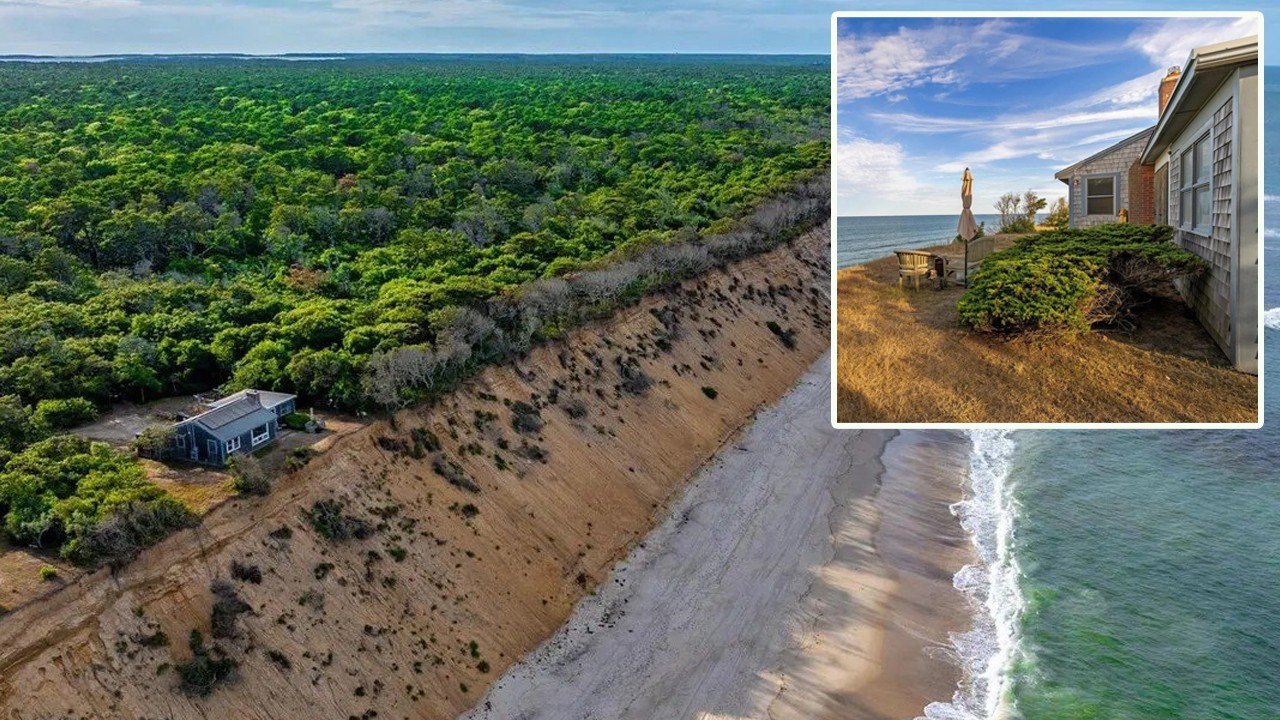E
astham, Massachusetts, now hosts a 972‑square‑foot Cape Cod cottage—known locally as “The Outer Most House”—that sits precariously on a bluff that has already lost 59 feet of land to the Atlantic. The gray‑shingled home, built in 1956, was last sold in 2020 for $450,000 but is now listed for $239,000, a price that reflects its imminent threat from coastal erosion.
When the current owner purchased the property, the house had a 75‑foot buffer from the bluff’s edge; today that buffer shrinks to just 16 feet. Listing agent Jack Sullivan of William Raveis Real Estate – Harwich Port notes that two offers have come in from builders and retired builders who see the potential for a project. “The home itself is great,” Sullivan says, “but the erosion makes it a risk.”
Inside, the cottage features a cozy living room with a fireplace and large windows that frame the ocean view. A corner bedroom is bathed in natural light, and the updated bathroom boasts a walk‑in glass shower. The interior has been modernized with laminate flooring, oversized windows, radiant heat, solar panels, a charging station, and an outdoor shower. The seller lived there full‑time for five years, and Sullivan estimates that a buyer could enjoy the property for two to eight years if weather conditions remain calm.
The bluff’s erosion has accelerated in recent years. In one year, three nor’easters removed 23 feet of land. While seawalls protect the Cape Cod Bay side, the Atlantic side overlooks federally protected land in the Cape Cod National Seashore, leaving no mitigation options. The timeline for further erosion is uncertain, but the bluff’s 75‑foot height means that collapse would not happen overnight. “You have three or four days to make a dash,” Sullivan explains.
If the house does fall, the new owner would be responsible for cleanup. Removing the structure before it collapses could cost a five‑digit sum; if it falls onto the beach, the cost could rise to six digits. Some buyers have considered moving the house, but the presence of a septic system and well behind the home may complicate relocation.
Insurance is another concern. The seller’s homeowner policy does not cover a collapse into the ocean. Sullivan reassures potential buyers that erosion is gradual, not sudden, and that the bluff’s height provides a buffer. He also notes that the property’s unique situation has attracted interest from across the country.
For those willing to take on the risk, the cottage offers spectacular Atlantic views, a fireplace, solar panels, and an outdoor shower. At $240,000, a buyer could potentially generate $10,000 a month in rental income if they hold the property for two years. Retired builders, who can handle demolition, are particularly interested, citing the opportunity to enjoy the home for a few years before the erosion takes its toll.
In summary, this Eastham cottage is a rare opportunity for buyers who can tolerate the risks of coastal erosion. Its low price, modern amenities, and oceanfront location make it a compelling, if precarious, investment.













